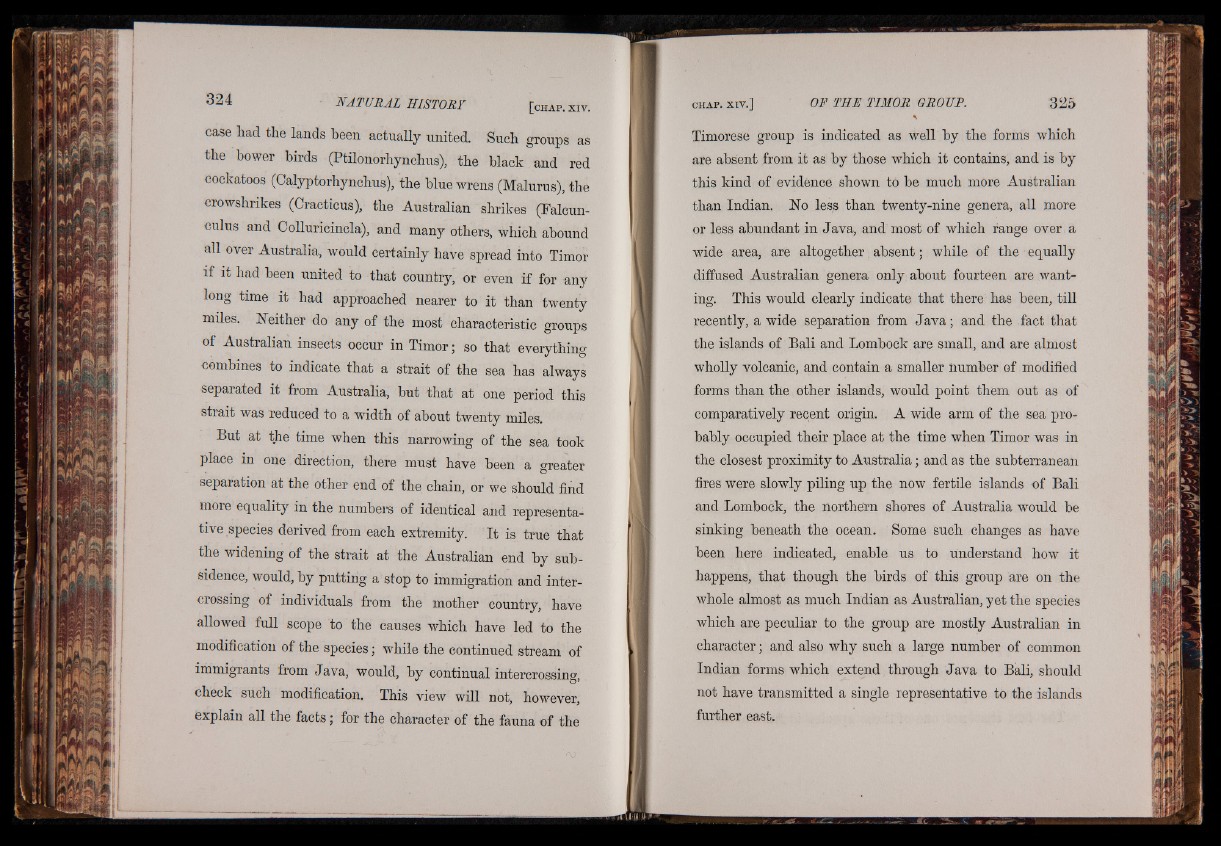
case had the lands been actually united. Such groups as
the bower birds (Ptilonorhynchus), the black and red
cockatoos (Calyptorhynchus), the blue wrens (Malurus), the
crowshnkes (Cracticus), the Australian shrikes (Falcun-
culus and Colluricincla), and many others, which abound
all over Australia, would certainly have spread into Timor
if it had been united to that country, or even if for any
long time it had approached nearer to it than twenty
miles. Neither do any of the most characteristic groups
of Australian insects occur in Timor; so that everything
combines to indicate that a strait of the sea has always
separated it from Australia, but that at one period this
strait was reduced to a width of about twenty miles.
But at the time when this narrowing of the sea took
place in one direction, there must have been a greater
separation at the other end of the chain, or we should find
more equality in the numbers of identical and representative
species derived from each extremity. It is true that
the widening of the strait at the Australian end by subsidence,
would, by putting a stop to immigration and intercrossing
of individuals from the mother country, have
allowed full scope to the causes which have led to the
modification of the species; while the continued stream of
immigrants from Java, would, by continual intercrossing,
check such modification. This view will not, however,
explain all the facts; for the character of the fauna of the
c h a p . xxv.] OF THE TIMOR GROUP. 3 2 5
\
Timorese group is indicated as well by the forms which
are absent from it as by those which it contains, and is by
this kind of evidence shown to be much more Australian
than Indian. No less than twenty-nine genera, all more
or less abundant in Java, and most of which range over a
wide area, are altogether, absent; while of the equally
diffused Australian genera only about fourteen are wanting.
This would clearly indicate that there has been, till
recently, a wide separation from Ja v a ; and the fact that
the islands of Bali and Lombock are small, and are almost
wholly volcanic, and contain a smaller number of modified
forms than the other islands, would point them out as of
comparatively recent origin. A wide arm of the sea probably
occupied their place at the time when Timor was in
the closest proximity to Australia; and as the subterranean
fires were slowly piling up the now fertile islands of Bali
and Lombock, the northern shores of Australia would be
sinking beneath the ocean. Borne such changes as have
been here indicated, enable us to Understand how it
happens, that though the birds of this group are on the
whole almost as much Indian as Australian, yet the species
which are peculiar to the group are mostly Australian in
character; and also why such a large number of common
Indian forms which extend through Java to Bali, should
not have transmitted a single representative to the islands
further east.